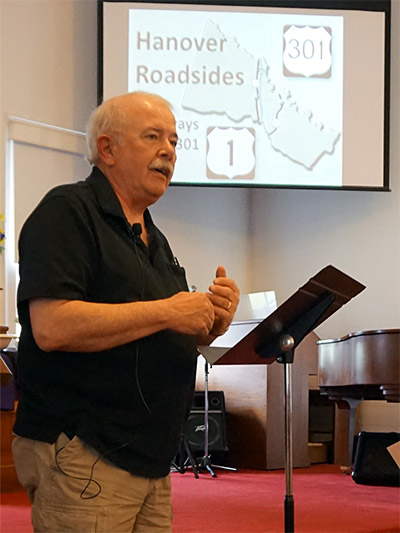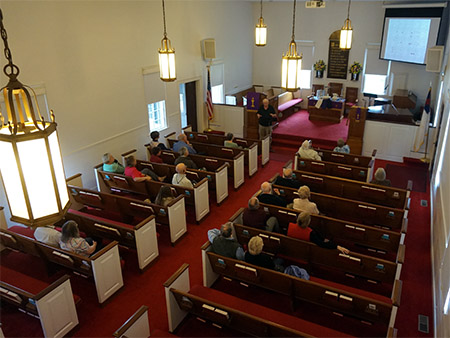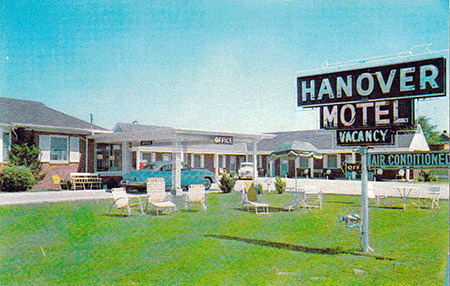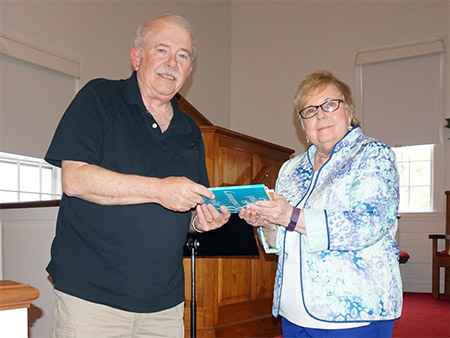 |
The Hanover County Historical Society's quarterly meeting took place on Sunday, March 26, at historic Slash Church in Ashland. The speaker was Tim O'Gorman, the former director of the US Army Quartermaster Museum at Fort Lee, and author of three fascinating books that detail the many roadside attractions that dotted Routes 1 and 301 in Virginia from the 1920's to the 1960's, many of which no longer exist. Mr. O'Gorman presented Hanover County: Routes 1 and 301 Roadsides, concentrating on those commercial venues in Hanover County. |
|
 Tim O'Gorman in action.
|  |
The first American gasoline-powered car appeared in 1893, and by 1920 there were 10 million automobiles in the United States. Early drivers had to contend with a disorganized mishmash of local routes, and travelling any sort of long distance was, at best, a confusing nightmare.
The United States Numbered Highway System was officially launched in 1926, designating odd numbers to north/south routes, and even numbers to east/west routes. US Route 1 reaches from the US/Canada border at Fort Kent, Maine, to the Florida Keys. Serving most of the major US cities along the east coast, for decades it was the primary route by which vacationers from the north made their annual pilgrimage to Florida.
 Mr. O'Gorman addresses the congregation. |
|
Hotels and restaurants were built in great numbers along both Routes 1 and 301, a spur of Route 1 that runs through the South Atlantic states and also bore a great deal of traffic from the 1930's to the 1960's.
Due to their convergence at Richmond, the largest concentration of hotels along Routes 1 and 301 occurred between Ashland and Petersburg, Virginia. Mr. O'Gorman explained that the best photographic record of these bygone establishments are postcards, which were a commonly used advertising medium of the period.
The interstate highway system was launched in 195, and by 1964 Interstate 95 connected Washington, DC to the North Carolina border. Routes 1 and 301 saw an immediate decline in traffic, which was the death knell for most of their roadside attractions. In the words of journalist Charles Kuralt:
Thanks to the Interstate Highway System, it is now
possible to travel across the country from
coast to coast without seeing anything. |
 |

The Hanover Motel, built in 1940 and still intact today. From Tim O'Gorman's book, Traveling Virginia's Tobacco Trail: A Postcard Roadside History of U.S. Highway 301 From Dahlgren to Emporia, 1920 to 1965. |
|
 Mr. O'Gorman is presented with two Historical Society books Mr. O'Gorman is presented with two Historical Society books
by HCHS president Faye Wade. |
 |
|
|
Tim O'Gorman is the author of three books on the subject of his presentation. Click here to see all of his books available on Amazon.com. |
|
|  |


